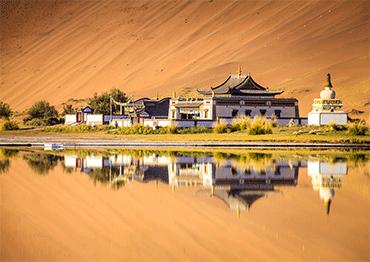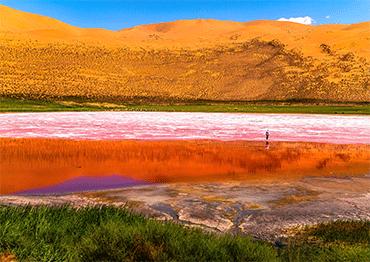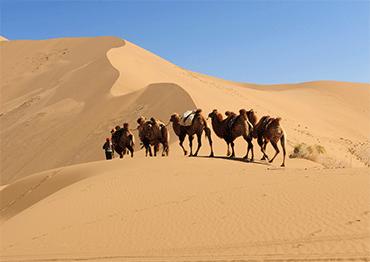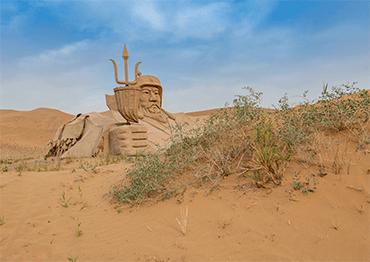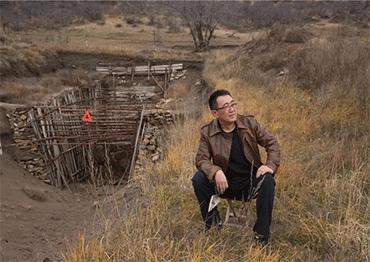n July 26, 2024, China’s Badain Jaran Desert – Towers of Sand and Lakes, was inscribed as a UNESCO World Heritage site by the United Nations Educational, Scientific and Cultural Organization during the 46th session of the World Heritage Committee in New Delhi, India. It is the first world natural heritage site in China’s Inner Mongolia Autonomous Region and the country’s first desert natural heritage site.
Covering an area of 726,291 hectares with a buffer zone of 891,114 hectares, Badain Jaran is China’s third-largest desert and the second-largest drifting desert. It has 144 lakes scattered among the dunes. They are mostly saline, exhibiting different colors due to differences in salinity, but there are also 12 freshwater lakes, providing a habitat to worms, mollusks, crustacea and fish.
According to UNESCO, the desert features the world’s tallest, stabilized sand mega-dune with a height of 460 meters, the highest density of inter-dunal lakes and the largest expanse of “singing sands” – the resonance caused by wind moving dry and loose sand and wind-eroded landforms. The varied landscape makes a highly diverse habitat with notable biodiversity. It is home to a variety of plant species and wildlife, including swans, mountain sheep and foxes. This is why the site boasts “outstanding aesthetic value,” UNESCO said.
Besides the natural beauty, the site provides a perfect geomorphological example for observations and research into long-term climate change and desert evolution as its desert-forming process is still going on, and it is subject to climate change and the tectonic uplifting of the Qinghai-Xizang Plateau.
Today there are only a few herder families left and limited tourism in the area. But human activities can be traced to ancient times, with tribes leaving cultural relics such as petroglyphs dating back some 6,000 years. The challenge of natural heritage protection and social development is yet to be addressed.
Ge Zhiyong, deputy director of the Research Institute of Cultural Relics and Archaeology of Inner Mongolia, spoke to China News Service about why the desert was listed and how to protect its natural and cultural value.
CNS: What impresses you most about Badain Jaran Desert?
Ge Zhiyong: Deserts are so often associated with death, loneliness and dryness. But Badain Jaran Desert, which I often visit, is lively and vibrant. Located in the Alashan Plateau of Inner Mongolia in the extremely arid temperate desert region of northwestern China, it is the country’s third-largest desert and second-largest drifting desert [in which the sands “shift”].
As part of my work, I have explored deep into the hinterland of many deserts. I have the feeling that each desert is special and unique, as if each has its own personality, either lonely and silent, or magnificent and beautiful. Only when facing deserts can humanity restrain their arrogance toward nature. People are often awestruck when faced with the reality of deserts, they feel they are just a grain of sand in this vast and expansive desert. But Badain Jaran Desert left a totally different impression on me.
It features a variety of wind-eroded landforms, dense desert lakes and large sand towers, making its personality more distinct. Unlike deserts that are dominated by low-sloping sand dunes, Badain Jaran Desert features tall and forbidding sand towers. But when you climb over them, a clear and colorful desert lake often pops up, calm as a mirror. They have rich and dream-like colors, such as blue, green and pink as a result of various salinity levels and microbial populations, and you might see water birds, such as ruddy shelducks, swans, Demoiselle cranes, white spoonbills and black-winged stilts playing and chasing one another. All this seems to create a paradise surrounded by sand towers.
CNS: From your perspective as an archaeologist, why did UNESCO list the desert?
GZ: Badain Jaran Desert is based in Alxa League, in the northwest of North China’s Inner Mongolia Autonomous Region, covering a landmass of 47,000 square kilometers. It features a uniquely charming desert landscape, animal diversity and cultural heritage site. In particular, its sand towers, deserts and lakes are of unique value in terms of natural heritage.
And it is home to the world’s highest sand tower, known as “Mount Qomolangma (Everest) of the desert.” [Bilutu Peak, with an altitude of 1,611 meters and a relative height of 500 meters.] Its sand towers and the lakes they surround make an extraordinary natural scenery. In particular, the 144 lakes that lie between the sand towers present a variety of stunning colors, creating a unique aesthetic value. It is an outstanding example illustrating how desert landscapes and landforms evolve in temperate and hyper-arid climates.
The desert is also a habitat and shelter for a wide variety of living creatures, with traces of humans dating from the Neolithic era to the present day. It is a naturally formed scenery where living creatures and the desert coexist in harmony, which reflects the uniqueness of its value. Therefore, its UNESCO listing is well-deserved.
CNS: What areas there are worth further archaeological exploration?
GZ: If you bend down and look carefully, you can occasionally find some exquisite agate blades and pottery shards, buried by the sand but uncovered by the wind. These relics left by ancient people indicate that humans lived and thrived there for more than 1,000 years and created a brilliant civilization.
Looking at agate blades and pottery shards, I often wonder how these ancient people coexisted with this desert and its lakes. Why are there so many relics and artifacts in this desert, which is deemed uninhabitable by modern people? Why would the ancients brave ravaging sandstorms rather than leave this place? These questions long puzzled me until I saw the petroglyphs and a temple here, when I seemed to finally have the answer.
The petroglyphs, carved in the stones by the ancient people who lived on this land, are just like “epics” that depict their lives. This desert was historically home to North China’s nomadic peoples, such as the Qiang, Yuezhi and Huns, and these petroglyphs are tangible reflections of their spiritual and material life, realistically depicting nomadism, hunting, settlements, dancing, athletics and stars, with a primitively simple and crude style.
Looking closely at these petroglyphs, one feels peace, tranquility and confluences of cultures, as well as the harmonious coexistence of man and nature.
CNS: There is a “Forbidden City of the desert.” What is that?
GZ: After years of visits, we took note of a temple [Badain Jaran Buddhist Temple] situated in the hinterland of the desert, built in 1755 during the Qing Dynasty (1644-1911). It is not big, but it is known as the “Forbidden City of the desert.” From this name, it’s easy to imagine how important it is to locals, and how difficult it was to build such a structure in a desert. All the bricks, stones, beams and pillars had to be transported there across those imposing sand towers, which is extremely difficult.
The building is nestled in a flat area surrounded by sand towers and lakes. When you see it in person, you feel really emotional because of the harmonious coexistence of the sand towers, the lake, the building and the people. The word I use is moved, not shocked. There isn’t the slightest discord: the sand towers, the lakes and the temple structures are so complementary to each other that nothing is highlighted yet everything seems to be highlighted. The golden sand towers, the blue lakes, as well as the red-and-white colored structure all seem a natural fit.
When you are here, you truly understand harmony between humans, between humans and society, as well as between humans and nature. The philosophy of “harmony” is fully embodied here. This very idea embodies the essence of traditional Chinese culture, as well as life in its the most perfect and complete form.
I think this is exactly why the nomadic peoples of northern China have, for thousands of years, been so deeply affiliated with this land, where the harmonious balance between humans, as well as that between humans and nature, has been established and maintained.
CNS: The UNESCO listing is a good chance to better protect and promote the desert. What should be done in this regard?
GZ: I see the inclusion as a new starting point for conservation, utilization and research into the desert. Due to its geographical and environmental restraints, research has not been very thorough. Lack of understanding and research will definitely affect its conservation and utilization.
After the listing, the desert will attract greater attention from more people, so there will be a contradiction between its extremely fragile ecosystem and increased visits and use. The local government will have to make planning efforts.
It is essential to leave time and nature, rather than humanity, to decide how the desert will evolve. It formed over hundreds of millions of years, and coexisted with humanity for thousands of years, during which humanity has been in awe of it, and carefully adapted to the rhythm of nature.
That’s why people feel it has retained its most primitive state, and this is the basis and key to the success of its inscription as a world heritage site. We should still retain our awe of nature and continue to practice the philosophy of green development.
We should look at it like a book: read it, understand it and better protect and utilize it after carrying out in-depth research. I believe that this desert will bring us even more wonders and surprises.
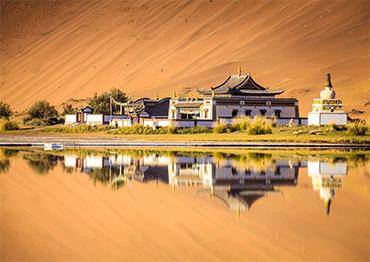
 Old Version
Old Version
